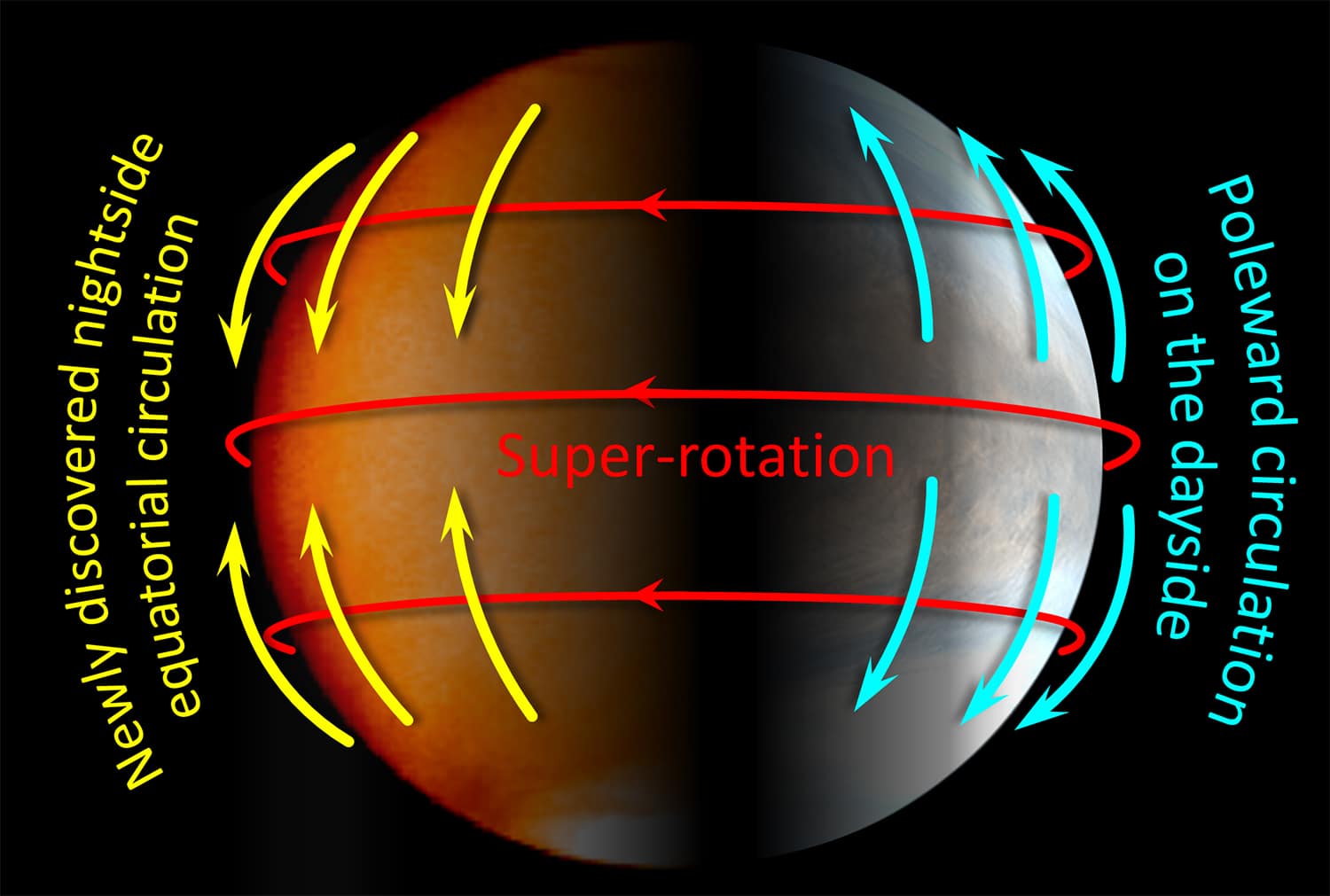
Venus is often named Earth’s twin. Both planets have a lot of similarities. The atmosphere of the Venus is 90 times denser than that on Earth, and it is made of 96.5% of CO2 and 3% of Nitrogen. This means that both planets have the same amount of Nitrogen on their atmospheres. Clouds on Earth are common, whereas clouds on Venus cover the complete Venus’ atmosphere.
The study of Venus weather could help scientists understand the weather on Earth too. For this, they need to observe cloud motion on Venus day and night at specific wavelengths of infrared light.
The daytime weather on Venus is easily accessible: prominent poleward drifts have been observed with dayside cloud tracking and interpreted to be caused by thermal tides and Hadley circulation. However, little is known about the weather on Venus at night.
Previously some limited infrared observations were possible of the venus night weather, but these were too limited to paint a clear picture of the overall weather on Venus.
Now, scientists have found a new way to make nighttime weather forecasts for Venus. They devised a new way of using infrared sensors onboard the Venus orbiter Akatsuki to reveal the first details of the venus weather at night.
Akatsuki carried an infrared imager that does not rely on illumination from the sun to see. However, even this cannot directly resolve details on the nightside of Venus, but it did give researchers the data they needed to see things indirectly.
Professor Takeshi Imamura from the Graduate School of Frontier Sciences at the University of Tokyo said, “Small-scale cloud patterns in the direct images are faint and frequently indistinguishable from background noise. To see details, we needed to suppress the noise.”
“In astronomy and planetary science, it is common to combine images to do this, as real features within a stack of similar images quickly hide the noise. However, Venus is a special case as the entire weather system rotates very quickly. Hence, they had to compensate for this movement, known as superrotation, to highlight interesting formations for study. Graduate student Kiichi Fukuya, developed a technique to overcome this difficulty.”
Super-rotation is a crucial meteorological phenomenon. It is a ferocious east-west circulation of the entire weather system around the planet’s equator, and it dwarfs any extreme winds.
Scientists explored the mechanism on Venus that sustains this superrotation and believe. They think that characteristics of venus night weather could explain it.
Prominent equatorward flows are found on the nightside, resulting in null meridional velocities when these are zonally averaged. The velocity structure of the thermal tides was determined without the influence of the Hadley circulation.
The semidiurnal tide was found to have an amplitude large enough to contribute to the maintenance of the atmospheric superrotation. The weakness of the mean meridional flow at the cloud top implies that the poleward branch of the Hadley circulation exists above the cloud top and that the equatorward branch exists in the clouds.
Imamura said, “We are finally able to observe the north-south winds, known as meridional circulation, at night. What’s surprising is these run in the opposite direction to their daytime counterparts. Such a dramatic change cannot occur without significant consequences. This observation could help us build more accurate models of the Venusian weather system, which will hopefully resolve some long-standing, unanswered questions about Venusian weather and probably Earth weather too.”
Journal Reference:
- Fukuya, K., Imamura, T., Taguchi, M. et al. The nightside cloud-top circulation of the atmosphere of Venus. Nature 595, 511–515 (2021). DOI: 10.1038/s41586-021-03636-7
Continue reading Venus night weather revealed on Tech Explorist.
0 comments:
Post a Comment